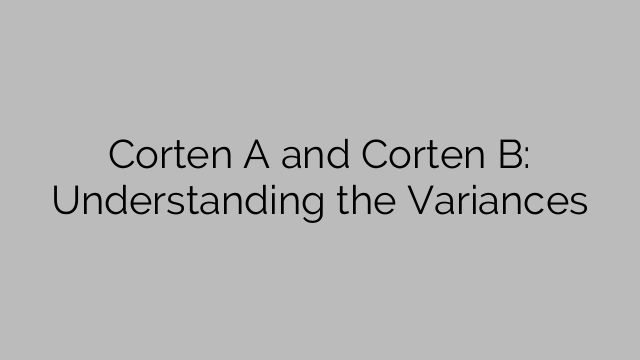Firstly, it is important to note that Corten A and Corten B are both types of weathering steel, which means they are designed to corrode and form a protective rust-like layer when exposed to the elements. This layer acts as a barrier against further corrosion, making weathering steel a durable and low-maintenance material choice.
The primary distinction between Corten A and Corten B lies in their chemical composition. Corten A is primarily composed of copper (0.20-0.30%), chromium (0.50-1.25%), nickel (0.65%) and phosphorous (0.040%), while Corten B contains a higher percentage of carbon (0.20-0.30%) and manganese (0.80-1.25%). These variances in chemical composition give each material unique properties that may be advantageous for specific applications.
Corten A is known for its high tensile strength, which makes it suitable for structural applications such as bridges, buildings, and retaining walls. It offers excellent resistance to atmospheric corrosion, making it an ideal choice for outdoor structures exposed to harsh weather conditions. Additionally, Corten A has a higher resistance to corrosion cracking and pitting, making it a more reliable option for long-term durability.
Corten B, on the other hand, is often preferred for aesthetic purposes due to its darker and more uniform appearance. It is commonly used in architectural applications such as facades, cladding, and sculptures, where visual appeal is crucial. The higher carbon content of Corten B gives it a smoother and more consistent patina, which some users find more desirable for decorative purposes.
Despite these differences, both Corten A and Corten B offer similar overall performance in terms of corrosion resistance and durability. Nevertheless, it is important to note that weathering steel, including Corten A and Corten B, is not suitable for use in highly corrosive environments or in areas exposed to saltwater. In such cases, other corrosion-resistant materials should be considered.
In conclusion, understanding the variances between Corten A and Corten B is essential when selecting the appropriate material for a specific project. While Corten A is generally preferred for structural applications due to its higher tensile strength and resistance to corrosion cracking, Corten B is often chosen for its aesthetic appeal and more uniform patina. Both materials offer excellent corrosion resistance and durability, making them popular choices for outdoor use. However, it is important to assess the specific requirements of each project and consult with experts to ensure the optimal material choice.
[ad_2]

